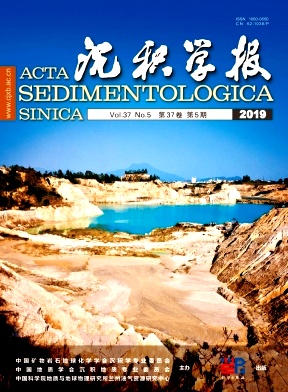Depositional Differentiation and Reservoir Potential and Distribution of Ramp Systems during Post-rift Period: An example from the Lower Cambrian Xiaoerbulake Formation in the Tarim Basin,NW China
doi: 10.14027/j.issn.1000-0550.2019.006
- Received Date: 2018-06-14
- Rev Recd Date: 2019-01-19
- Publish Date: 2019-10-10
-
Key words:
- post-rift period /
- ramp /
- large-scale reservoir /
- Xiaoerbulake Formation /
- Tarim Basin
Abstract: Carbonate ramps in the post-rift filling stage have gradually become recognized as areas having the greatest potential for deep hydrocarbon exploration. In the Lower Cambrian Xiaoerbulake Formation in the Tarim Basin, for example,the pre-depositional paleotectonic framework and the lithofacies response to the paleogeography,as well as the regional distribution of reservoirs and the differences in their internal architecture were systematically analyzed from 42 of the most recently processed 2D seismic lines,nine outcrops in the Keping area and data from 12 wells, etc. The results show that (1)the paleotectonic pattern of three uplifts and two sags occurred during the early Cambrian,and exerted obvious control of the sedimentary differentiation in the Xiaoerbulake carbonate ramp system. Highenergy grain shoals and mound-shoal complexes developed around the paleo-highs. Paleocurrents complicated the sediment composition. Three sub-types of ramp are recognized in the Xiaoerbulake Formation:a slope-plateau ramp dominated by grain shoals at the northern margin of the paleo-high of the SW Tarim Basin;a homoclinal ramp dominated by a mound-shoal complex on Keping-Wsu lower high,and an isolated ‘island’ sub-type in the Lunnan-Yaha lower high. (2)A peripheral high-energy facies belt of the paleo-uplift constitutes an important carrier for the Xiaoerbulake Formation reservoir. Early dolomitization has effectively preserved the original pores throughout the subsequent burial period. The reservoirs are mainly located in the peripheral high-energy facies belts of the three paleo-highs,covering an area of about 9×104 km2. The reservoirs in the different ramp systems have obvious differences. The grain-shoal dominated type ramp in the SW Tarim uplift shows the greatest potential for future exploration for extra-large-scale Type Ⅱ reservoirs. From the example anatomy,it is believed that the paleotectonic pattern was the primary control of carbonate ramp formation during the post-rift filling stage,and needs further work to fully understand its influence on the distribution of reservoir facies and internal architecture.
| Citation: | ZHU YongJin, NI XinFeng, LIU LingLi, QIAO ZhanFeng, CHEN YongQuan, ZHENG JianFeng. Depositional Differentiation and Reservoir Potential and Distribution of Ramp Systems during Post-rift Period: An example from the Lower Cambrian Xiaoerbulake Formation in the Tarim Basin,NW China[J]. Acta Sedimentologica Sinica, 2019, 37(5): 1044-1057. doi: 10.14027/j.issn.1000-0550.2019.006 |






 DownLoad:
DownLoad: